CQ15: What is the difference between creativity and innovation?
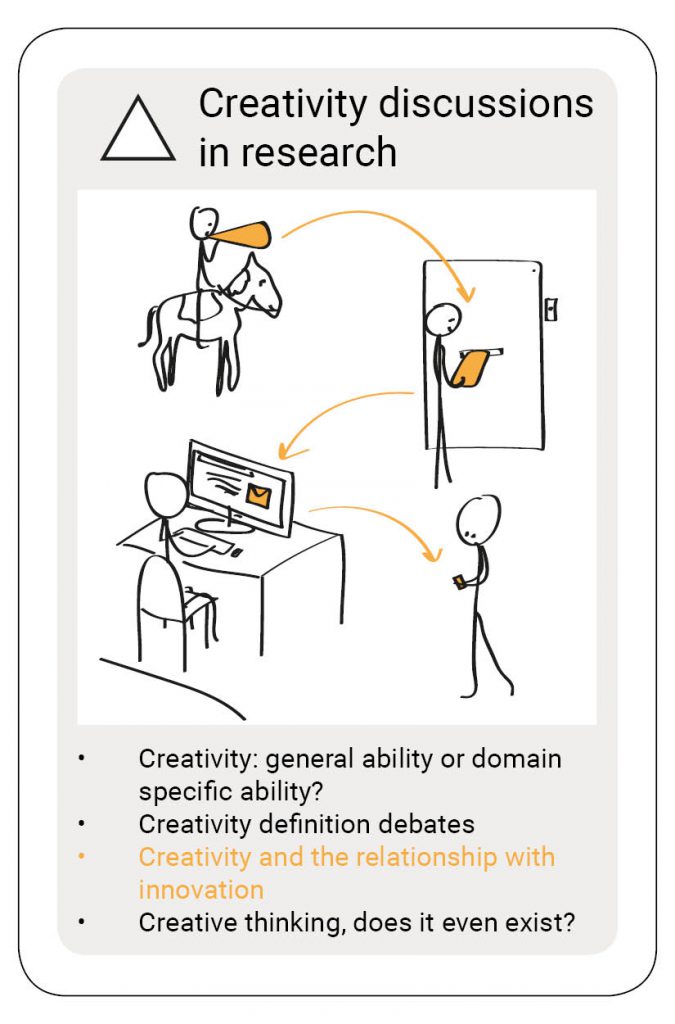 I recently became the new President of the European Association of Creativity & Innovation (EACI)*. From that perspective, it would be nice to clarify the relationship between creativity and innovation. Creativity and innovation are popular concepts in our world. We think they are crucial for long-term business survival (Anderson et al., 2014). The two concepts go hand in hand. But how do they differ from each other? That is the question I want to answer in this article. Let’s start with the similarities between the two concepts.
I recently became the new President of the European Association of Creativity & Innovation (EACI)*. From that perspective, it would be nice to clarify the relationship between creativity and innovation. Creativity and innovation are popular concepts in our world. We think they are crucial for long-term business survival (Anderson et al., 2014). The two concepts go hand in hand. But how do they differ from each other? That is the question I want to answer in this article. Let’s start with the similarities between the two concepts.
*We are not officially coming out yet as the new board as we are working on a strategic plan on how to revive the EACI. Because of Corona, this is taking longer than we anticipated. If you have an opinion about the EACI, a question for us, or a need you would the EACI to fulfill, don’t hesitate to contact me!
The overlap between creativity and innovation
We all see the relation, creativity and innovation both have something to do with creating new value. If we look at the definition of a creative product I chose in the previous article (CQ14), don’t we also look at a definition of innovation? Let’s have a quick look at that definition again.
‘A creative product is a product that is original and meaningful in context’(CQ14). Where original comes in different words like newness and novelty (though the meaning of those words is slightly different). And meaningful also comes in different words. More different words than original. For example, usefulness, appropriateness, valuability, effectiveness or fit. See (CQ14).
We could use the same definition for an innovative product. So where is the difference when we say, that company is creative or that company is innovative?
Obviously, some psychologists thought about this before me. I will present three perspectives on the difference between creativity and innovation.
- The idea vs implementation perspective
- The intention perspective
- The continuum perspective
I will leave some questions open for us to think about further. Of course, if you have a good argument one way or the other, let me know! I will start and elaborate most on the idea vs. implementation perspective. Here we go.
The idea vs implementation perspective
Anderson et al. (2014) reviewed multiple theories on creativity and innovation in organizations. Their conclusion is:
‘In essence, because creativity centers on idea generation and innovation emphasize idea implementation, creativity is often seen as the first step of innovation’ (Anderson et al., 2014: p.1299).
And their definition integrates both innovation and creativity:
‘Creativity and innovation at work are the processes, outcomes, and products of attempts to develop and introduce new and improved ways of doing things. The creativity stage of this process refers to idea generation, and innovation refers to the subsequent stage of implementing ideas towards better procedures, practices, or products. Creativity and innovation can occur at the level of the individual, work team, organization, or at more than one of these levels combined but will invariably result in identifiable benefits at one or more of these levels of analysis’ (Anderson et al., 2014; p. 1298).
I underlined three parts in this definition I would like to discuss.
New & improved ways of doing things
Let’s first look ‘new and improved’. This part refers to the criteria of the output from creativity and innovation. Doesn’t ‘new’ and ‘improved’ remind you of two parts of a definition of creative products? New and improved, original and meaningful, it seems like familiar criteria.
But there is a crucial difference in meaningful and improved. Improved refers to change where meaningful does not. I think that this part ‘improved ways of doing things’ is the essence between the difference in creative output and innovative output.
You see, creative output is meaningful but doesn’t have to change our behavior. I can be moved by a painting, impressed by a new product, but that doesn’t necessarily mean something changes. Innovative output also changes the way the receiver acts, where creative output doesn’t have to do that. Following this line of thinking, you could argue that innovative output has more criteria than creative output. See figure 1 below.
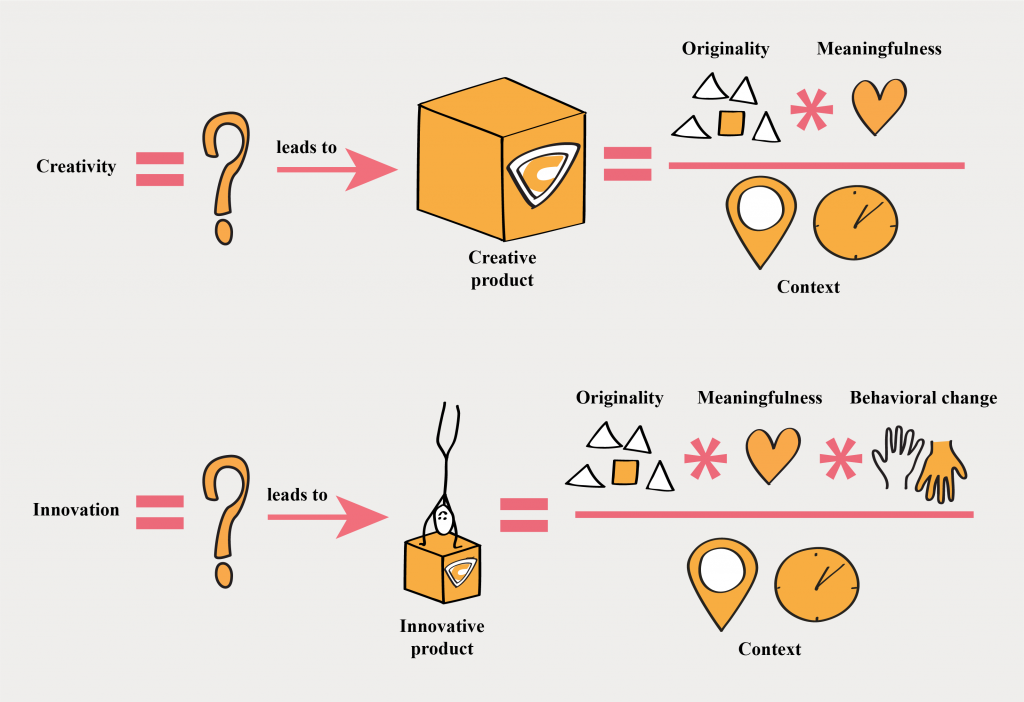
Figure 1: definitions of a creative product and an innovative product
Bear in mind that the distinction I make here is on the output level. This is the easy part. I still have two question marks in the figure above. My question as a facilitator, trainer and, as a teacher is on these question marks. What is the difference in doing, thinking, mindsets, skills, abilities, traits, knowledge, etc. between the process of innovation and creativity? Anderson et al. (2014) also try to tackle this part in their definition, by using ‘stages’.
Stages of creativity and innovation
My second underlined phrase in the definition by Anderson et al. (2014) refers to the role of creativity in this integrated definition: ‘creativity stage of this process refers to idea generation’.
And my third underlined phrase refers to the role of innovation: ‘innovation refers to the subsequent stage of implementing ideas towards better procedures, practices, or products.’
This division between creativity and innovation is consecutive, with innovation following creativity. The creativity stage is the process of idea generation and the innovation stage is the process of implementing that idea. See figure below: option 1.

Figure 2: Option 1 for the difference between creativity and innovation
Creativity is more than idea generation
I understand the argument that there needs to be a ‘first’ idea (although that is also questionable) to get moving in this creating process. But to say that creativity is only the process of getting to that idea doesn’t do it for me. There are many more ideas necessary throughout the stage of ‘implementing those first ideas’ (read innovation process). It is not like creativity stops where innovation begins. Anderson et al. (2014) also recognize that and solve that issue by saying these are non-linear processes. However, stages might come in a non-linear order. The stage of creativity is still defined by idea generation and the stage of innovation is still defined by implementation. See figure 3 below, option 2.

Figure 3: Option 2 for the difference between creativity and innovation
I agree that idea generation and realizing or testing these ideas take place in a non-linear order in a creating process. However, I disagree that idea generation refers to creativity (also see CQ4) and the realizing and testing (they call it implementing) refers to innovation. I think testing and realizing are also part of creating and therefore of creativity.
The difference between an idea and a product might shed more light on this issue.
Creative ideas and creative products
Mel Rhodes who, is famous in creativity research land for his 4p’s on creativity (creative person, product, process and press(environment)) (Rhodes, 1961), made an effort to define both idea and product in relation with creativity:
‘The word idea refers to a thought which has been communicated to other people in the form of words, paint, clay, metal, stone, fabric, or other material. When we speak of an original idea, we imply a degree of newness in the concept. When an idea becomes embodied into tangible form it is called a product. […] ‘Products are artifacts of thoughts’. (Rhodes, 1961: p.309).
Thus, Rhodes (1961) based the difference between an idea or a product based on tangibility. In recent definitions of ‘creative products’, ‘idea’ and ‘product’ are used interchangeably. That is because the criteria for researchers to measure creative output is not on tangibility but perceptibility (Plucker et al.). Since an idea can be written down or said out loud it can be perceived by others, thus it is observable and therewith measurable.
For a creativity researcher, the level of concretization is not an issue. A creative idea is a creative product. A developed and introduced creative idea (read innovative product) is a creative product. That is why I am using creative output as a general term for creative idea, and creative product. Because for me, maybe because I am a designer, I do associate ‘product’ with tangibility, like Rhodes (1961).
Psychologists assume that it is creativity that leads to creative outputs. So an innovative output is per definition a creative output. But a creative output doesn’t have to be an innovative output, because of the change in behavior issue. I also concluded this at the beginning of this article.
If we follow this line of thinking we could say that innovation is a process of changing behavior that comes with the application of the creative output. Innovation could come after creativity as defined by Anderson et al. (2014), but not as the implementation stage but application stage. See option 3 in figure 4 below. Although changing behavior we could also see as a creativity process within itself…

Figure 4: Option 3 for the difference between creativity and innovation
To confuse us even more. West (2002) makes the following distinction between creativity and innovation:
‘Creativity is the development of ideas while innovation implementation is the application of [those] ideas […] creativity is thinking about new things innovation implementation is about doing new things. Innovation can then be defined as encompassing both stages – the development of ideas – creativity; followed by their application – the introduction of new and improved products, services, and ways of doing things at work.’
In this quote West (2002) first refers to creativity as thinking about ideas and innovation as the application of ideas. Where the entire development fits in, is unclear to me. Also, I don’t see the point in a term like ‘innovation implementation’ instead of ‘application’. For me, application is different from implementation** but I see the words used interchangeably more often (Runco, 2014; West, 2002). See option 4 in figure 5 below, for how I understand West’s (2002) perspective.
**I don’t know theory to support this claim. Maybe it is me, but I feel a big difference between implementation and application. Implementation feels like a top-down decision that is forced on others. Application feels more neutral and leaves more space for a decision by the user/receiver.

Figure 5: Option 4 for the difference between creativity and innovation
What I do like about West (2002) differentiation is that he calls the entire process ‘innovation’ and as part of that process we have the creativity process. If we combine that idea with option 4, we get option 5, see figure 6 below. In this option, when we talk about innovation and creativity, we are talking about the same thing in all cases except when we discuss the application of the creative output, then we purely discuss innovation.

Figure 6: Option 5 for the difference between creativity and innovation
Figure 6 resembles the first definition of creative and innovative output. In figure 7 below you find a combination of figures 1 and 6.
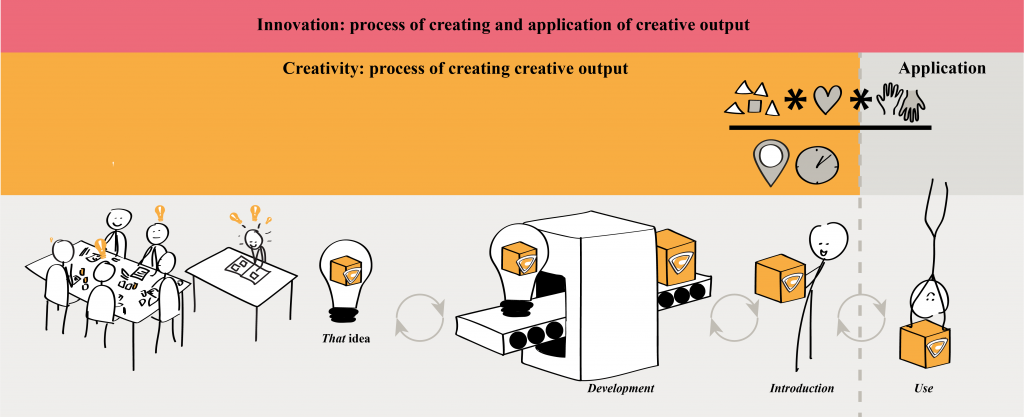
Figure 7: Option 5 for the difference between creativity and innovation including the definitions for creative and innovative output
I thought the differentiation between idea and product would help. Even though, I think it was good to enrich the definitions from figure 1, in our search for the relationship between creativity and innovation it didn’t bring a lot of new insights. Let’s see if I can find some completely different perspectives on the relationship between creativity and innovation.
The intention perspective
In description to characterize innovation, we see the words ‘intention’ or ‘purpose’ return more often. For example:
‘Innovation is restricted to intentional attempts to bring about benefits from new changes.’ (West, 2002: p.357).
Or: ‘Innovation: creativity purposefully applied to solve a given problem[…].’ (Mayfield, 2011: p.658)
Mayfield (2011) refers to the difference between creativity and innovation as follows (p658):
‘The major characteristic that gives innovation its unique characteristic in the field of creativity is that innovation is purposeful: the innovation fulfills a specific need. Where creativity can occur spontaneously and simply for the joy of being creative, innovation achieves some end or solves some problem’
There are a few phrases unclear to me in this distinction. Firstly, isn’t the joy of being creative fulfilling a specific need?
Secondly, in this perspective, there needs to be a driver (the intention or purpose) that moves us into a creating process. The argument is that creativity can also occur without this driver, innovation cannot. But are we talking about creativity and innovation as processes or outputs? Because I don’t have the answers, I think we have eight options, see figure 8 below.
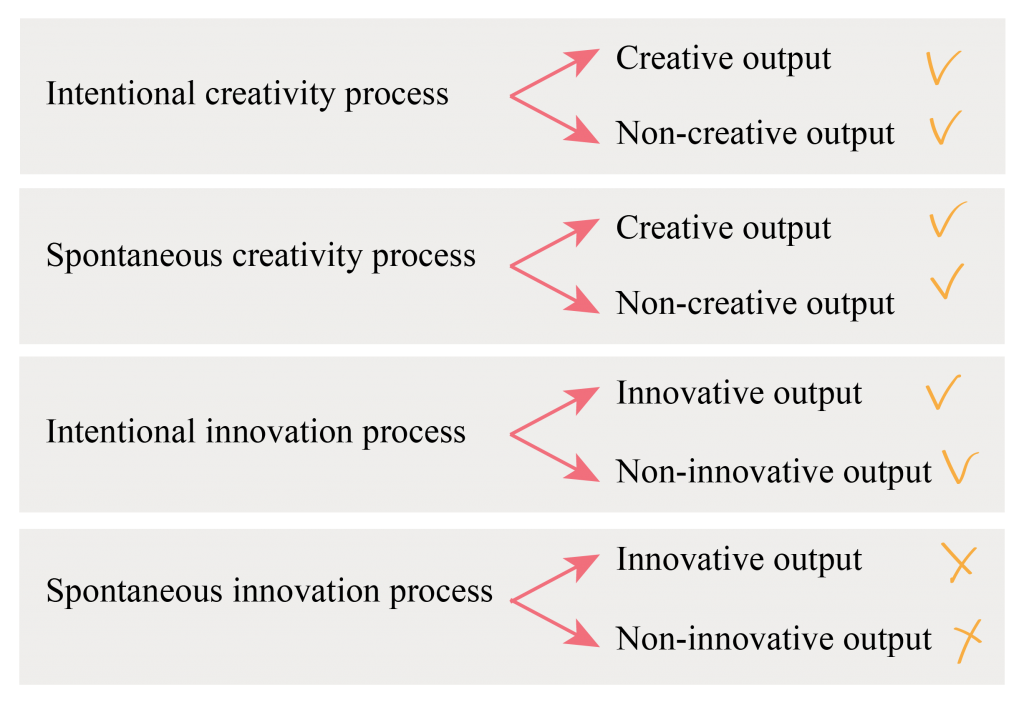
Figure 8: Different options for the intention perspective in the difference between creativity and innovation
The final two options, shown in figure 8, the ones that rely on a spontaneous innovation process, are not possible according to this intention perspective. I don’t see why not.
Maybe it has to do with the role of the consciousness or rationality that differentiates innovation from creativity. Maybe it has to do with the role of the judger of the output. And if so, is the judger the creator or the user, or both (the last is what is popular nowadays, we are all co-creating the world..)?
Clydesdale (2006) argues that the motivation for creativity is driven by internal forces and the motivation for innovation is driven by external forces. That could also be a way to look at things. This is something that needs more thinking from my side. But please, let me know if you have the arguments for either side of the argument.
The final option I want to mention is the continuum perspective.
The continuum perspective
Runco (2014, pp. 398-403) proposes a continuum of originality and effectiveness (Runco goes for effectiveness as the second word) in which we can place creativity and innovation. Creative outputs are more on the originality side of the spectrum, innovative outputs are more on the effectiveness side of the spectrum.
Fully original products that have no effectiveness, are outputs from psychosis for example. I guess Runco (2014) is referring to effectiveness for the person him/herself. It is of course, possible that someone creates something that we judge as creative, based on our context.
Fully effective outputs without original are routine or automated outputs. Runco (2104) calls it routine problem-solving. See figure 9 below. I am trying my best to stay away from the word problem-solving in relation to creativity. This relation will return in the article on Creative Problem Solving.

Figure 9: The continuum perspective on the relation between creativity and innovation, based on Runco (2014, p.399)
What if we introduce a time element in this perspective
Short period of time: creativity workshops
I wanted to mention the continuum perspective because it reminds of diverging – converging. In a workshop when we start to generate ideas, we use brainstorm rules and we totally go for originality. Then in the next phase, or the phase after reverging (Heijne & Van der Meer, 2019), we go for reality, for meaningfulness, usefulness, effectiveness etc. I don’t say that there is a relation per se, but it might be something to consider.
Longer period of time: innovation process
If you use a time component in the continuum perspective and include the start of any creativity or innovation process, an idea (or problem) till the end, the use of the output. We give an extra dimension to an innovation process as shown in figure 6, see figure 10 below. I think there is some truth that at the beginning of an innovation process the emphasis is more on originality than on effectiveness. It is cliché, but to quote Einstein: ‘If an idea is not absurd in the beginning, there is no hope for it.’
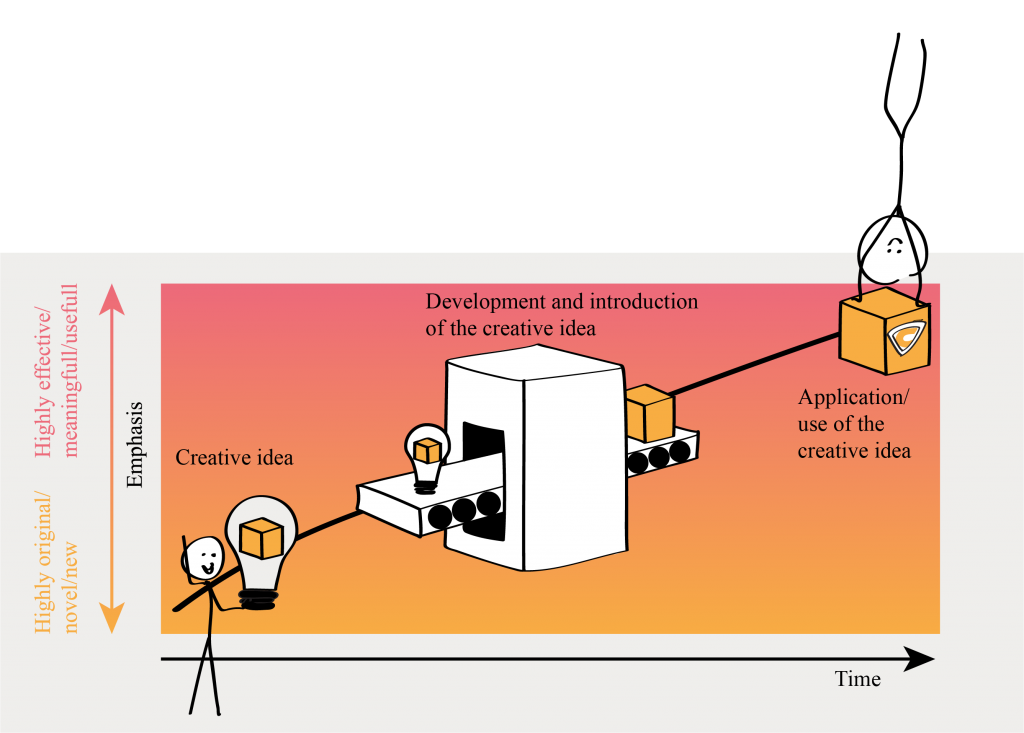
Figure 10: The continuum perspective with a time component
Conclusions
The relationship between innovation and creativity remain vague because both concepts are ambiguous.
Maybe the difference between creative output an innovative output is the application of the output.
Maybe it is intention that seperates innovation from creativity.
Maybe creativity and innovation lie on the same scale of originality and effectiveness.
Or maybe be should simply say that creativity is for art and innovation is for business, since many people have that association in my experience.
Me, I go for the application perspective with a touch of the continuum perspective. I ditch the intention perspective, doesn’t seem right (gut feeling) and I absolutely don’t want to get near the money perspective.
You choose for yourself.
What’s next
Next week the final article in this chapter on creativity research debates. In this final article, I will argue that there is no such thing as creative thinking. You will find the card for the next week below.
Willemijn
The creativity quartet combines my knowledge of and experience with creativity. Just like any other person I have experience with creativity as long as I live, but more deliberate when I started studying Industrial Design Engineering in 2001. I have over fifteen experience in facilitating and training creativity. My interest in creativity theory started in 2015. And I’m currently looking into doing promotional research on creating an overview of creativity theories. What you read in the articles are my interpretations of the truth. If you have something to add to that, please do so. Ending with my favorite quote on creativity by Maya Angelou:
“You can never use up creativity. The more you use, the more you have.”
References
- Anderson, N., Potočnik, K., & Zhou, J. (2014). Innovation and Creativity in Organizations: A State-of-the-Science Review, Prospective Commentary, and Guiding Framework. Journal of Management, 40(5), 1297–1333.
- Clydesdale, G. (2006). Creativity and competition: The Beatles. Creativity Research Journal, 18(2), pp. 129-139.
- Heijne, K. & Van der Meer, H. (2019). Road Map for Creative Problem Solving Techniques. Boom uitgevers Amsterdam, The Netherlands.
- Mayfield, M. (2011). Innovation. Encyclopedia of Creativity: Second Edition, eds. Runco, M. A. and Pritzker S.R., London, UK: Academic Press, 2011, Vol 1. pp. 658–666.
- Rhodes, M. (1961). An analysis of creativity. Phi Delta Kappan, 42, pp. 305-310.
- Runco, M. A. (2014). Creativity: Theories and themes: Research, development, and practice. Second edition. Oxford, UK: Academic Press.
- West, M. A. (2002). Sparkling Fountains or Stagnant Ponds: An Integrative Model of Creativity and Innovation Implementation in Work Groups. Applied Psychology: An Internation Review, 51(3), pp 355-424.
Tags:
SUGGESTIONS FOR FURTHER READING

CQ2: Creativity in The West anno 2020
The West anno 2020: we all need to be creative. The World Economic Forum’s (WEF) research ‘The Future of Jobs’ (2016) stated that creativity would be
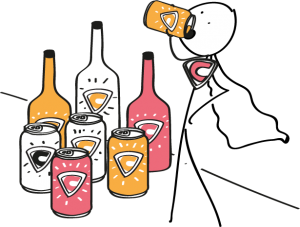
CQ22: Deliberate creativity methods
Can we be creative by choice? The word ‘deliberate’ implies we can. In this chapter I will describe four methods all based on the idea that we can be
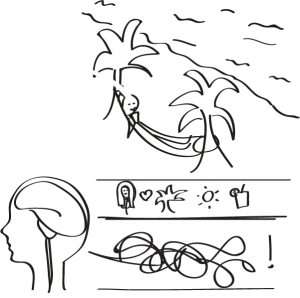
CQ10: Does creativity involve unconscious processes?
Many of us believe there is a role for the unconsciousness in creativity, at least to some extent. Why do we believe that? Is it true or not or
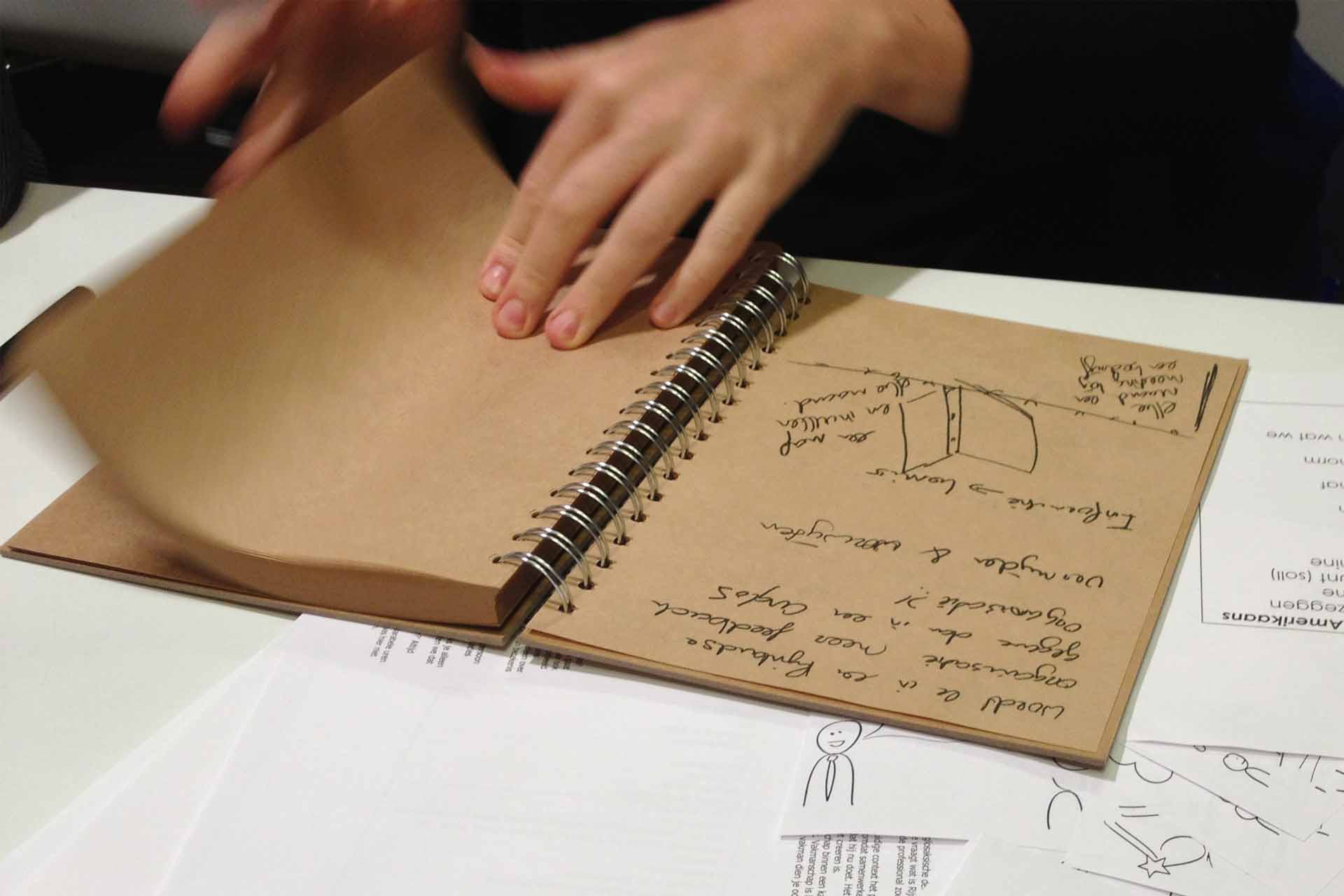
Title photo
Inspiration for inspiration
Would you like to receive the Creativity Quartet 2020 as inspiration? Think about how you can inspire us. For example, we have a coffee, you send us a book or article, link us to a person, point us to a website, etc. Leave your name and e-mail address and we’ll contact you for further information. We will not use your e-mail address to send you offers and won’t give away your information to other parties.



